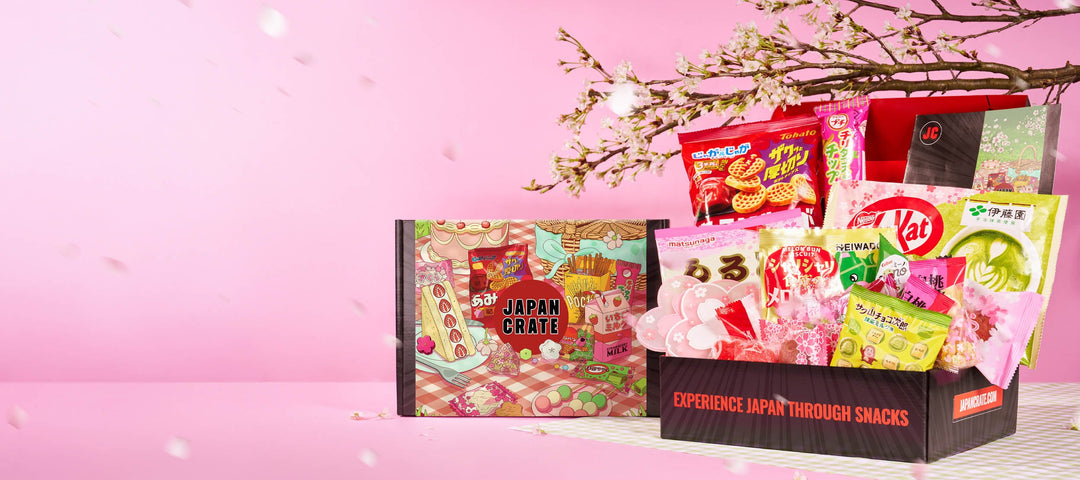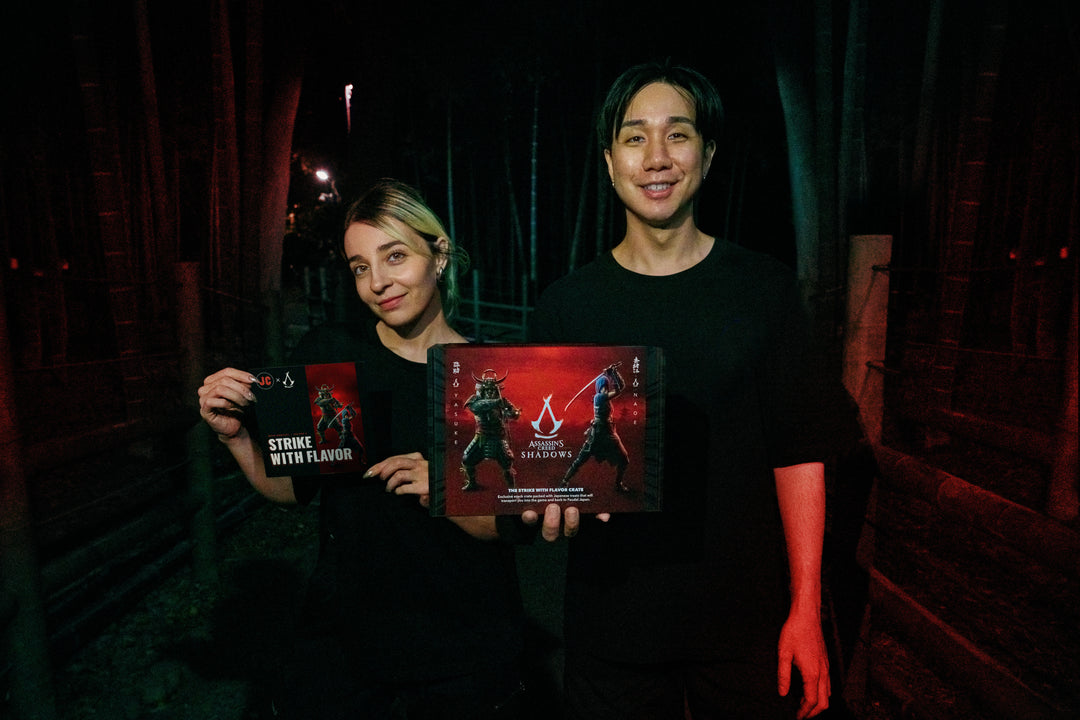What are Kaki No Tane Rice Crackers
The Kaki no Tane Rice Crackers
Japanese common snack and products have become so trendy in recent years. Japanese snacks, along with other Asian sweets and treats, have been adopted into the menus of popular European and American food choices. People no longer need to be told that tofu is not a type of cheese products or that ramen is a type of noodle typically sold as an instant dish. The Kaki no Tane may be the snack attracting the most current attention. Many love these Japanese rice crackers, and they make one of the greatest beer-friendly finger foods. The peanuts come in a spicy, crackly shell that is subtly salted with Kaki No Tane rice crackers. An explosion of tasty flavors from peanuts and rice crackers to a fiesta-looking for the eyes and palate combined with all high-quality ingredients will make you want to appreciate it mindfully. It is adored for its soy sauce flavor and crispy texture, perfect in the morning to boost energy or in the evening to unwind with your friends.

The Origin of the Kaki no Tane Rice Crakers
Yosaburo Imai, the founder of Naniwaya Confectionery, addressed the problem of making crackers using glutinous rice in Nagaoka City, Niigata Prefecture, in 1925. One day, Imai finally succeeded in creating an oval-shaped metal design after much effort. Imai, however, unintentionally strode on the metal pattern one day. No matter how hard he tried, he could not change the metal pattern to how it had been. Imai made rice crackers using the deformed metal design out of necessity, and the result was exactly what has predicted: snacks with a deformed oval shape looked like persimmon seeds, which marked the start of the kaki no Tane form.
And since the Taisho Era in Japan, the little, orange, crescent-shaped crunchy rice crackers with soy and mild chili pepper flavor have been a mainstay Japanese snacks at many bars. They are frequently combined with peanuts. Many businesses currently produce them, although Kameda Seika Co., Ltd. is the biggest manufacturer.

How Kaki no Tane Rice Crackers are Made?
Kaki no Tane's orange hue and crescent form is reminiscent of persimmon seeds. It can be produced using both glutinous and non-glutinous rice. The rice dough is usually seasoned with soy sauce and red chili pepper and baked without oil, resulting in a delicious and mildly spicy cracker. Red chili pepper and food colorings are generally responsible for the reddish-orange hue. However, certain goods are produced without the use of artificial coloring. Additionally, Kaki no Tane frequently includes roasted whole peanuts. The secret to a delectable and great snack is finding the right mix between bland, nutty peanut and spicy Kaki no Tane. Despite being sold alone, Kaki no Tane has become a Japan popular snack star due to its mix pack with peanuts.

Additionally, it is reported that a bar at the Imperial Hotel in Tokyo was the first location where peanuts were added to Kaki no Tane. It is believed that to improve volume in some bean stores during the second part of the 1950s, peanuts were mixed with Kaki no Tane.

Kaki no Tane Rice Crackers Flavors
Peanuts and tiny pieces of Japanese rice crackers, shape-like Persimmon seeds, are the main ingredients in the popular Japanese snack known as Kaki no Tane. They have a crumbly and crunchy texture and are available in various tasty flavors, including the original, wasabi, extra hot, and, more recently, chocolate-coated varieties. Along with these standard options, kaki no Tane also comes in various unusual flavors, including curry, umeboshi, takoyaki, and yuzu-kosho. Furthermore, the tiny seeds are flavored with soy sauce, bonito flake flavor, sugar, and other Japan-specific mix flavors, but most significantly, spicy. They have spicy taste because of the chili, but not as intensely so as wasabi peas, which can make you cry and clear your nose. Additionally, there are also regional flavors that are exclusive to specific areas of Japan. With many flavors available, a lot of people choose to pair their Kaki no Tane rice crackers pack with a glass of beer.

Kameda Seika Kaki no Tane Rice Crackers
Several businesses now manufacture Kaki no Tane rice crackers, but Kameda Seika Co., Ltd. is the biggest current Japan manufacturer. It is renowned for its kakipi and peanuts combo, which has been a Japanese favorite since 1966. Innumerable tasty variations, including wasabi, pickled plum and perilla, yuzu pepper, extra spicy taste, and even limited-edition flavors like Sichuan spice and double cheese, have been added to Kameda Seika's well-known snack products throughout the years. Kaki no Tane is available from Kameda Seika in handy packages including 6 minipacks. An average small pack contains 200 calories. Each pack's combination of carbohydrates, proteins, and fat makes it the ideal mid-afternoon snack, and the spice helps you wake up. No deep-frying here, thus no greasy hands. The packaging is, like most other things that you buy in Japan, bright and attractive with bold text. Moreover, the Kameda Kaki no Tane minipacks have the added benefit of having illustrations of the cutest characters, the kenage gumi, on each packet.

A new version of Kaki no Tane no peanuts is also being released if you have a common allergens, notably peanut and wheat, or if you simply can't get enough of these small crescent-shaped snacks. Additionally, any products under the Kameda name can be purchased online and at most grocery stores in Japan and Korea.

Kameda Kaki no Tane Rice Crackers Perfect Ratio
Since its introduction in 1966, Kameda Kaki no Tane has been the best-selling rice snack worldwide. Based on consumer input, Kameda rice cracker products has changed the ratio to peanuts in their most popular Kaki no Tane mix to 7:3. However, in actuality, the ratio of Kameda Kaki no Tane to peanuts was originally 7:3, but due to societal desires, it was altered to 6:4 and then changed back to 7:3 in 2019. Peanuts and spicy hot rice crackers made a fantastic taste and well-liked pairing. Undoubtedly, it contributed to the rise in Kameda Kaki no Tane's popularity.

Is Kaki no Tane Rice Crackers Healthy?

There is no doubt that Japanese rice crackers are among the best snacks available. They are also one of the most widely consumed. Japanese rice crackers are, in general, a wholesome snack option. They have a modest amount of protein, offer carbs, and have few calories. To add to its nutritional benefits, rice crackers frequently come in tastes like seaweed, sesame seeds, and seafood. This gives you the chance to select the variety that best matches your healthy eating strategy, and it also serves as the key to enjoying Japanese rice crackers in the healthiest manner.
Where to buy Kaki no Tane Rice Crackers?
The well-known snack Kaki no Tane, flavored with Japan delicacies, is the ideal option for those who want to bring the tastes of Japan as a souvenir! This rice cracker, shape-like persimmon, are crumbly, fragrant, mildly spicy, and come with peanuts. These rice crackers go into making the well-known snack called Kakipi. The winning combination of Kaki no Tane rice cracker mixed with peanuts, can also be covered with various flavors, including chilli, and ume or Japanese plum. Kaki no Tane pairs excellently with beer as the beverage's bitterness may cool the heat and savoriness of these incredible rice crackers. The occasional addition of real Japan spices enhances the pleasure of eating this crunchy snacks.

It's Japan Crate Time!
Experience the crispy crunch and various flavors of these rice crackers, and pick your favorite flavors from Sugoi Mart for instant purchase. With Japan Crate, we've made it our mission to make ordering goods from Japan simpler than ever. Along with a number of genuine Japanese snacks, available for individual purchase, we also provide a monthly box filled with goods from Japan that perfectly capture the spirit of the nation. Our Japan Crate subscription box includes a great snack every month, so make sure to subscribe to try new Japan products you'll definitely enjoy with your family and friends.
Author Bio








Leave a comment